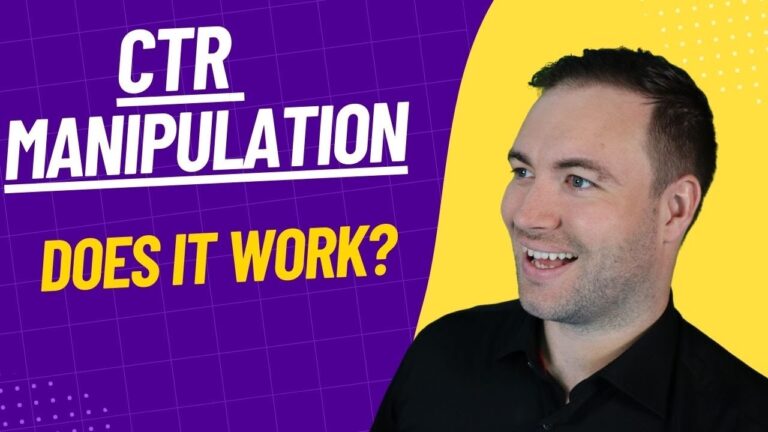Effective Techniques for Applying GMB CTR Manipulation Successfully
Effective Techniques for Applying GMB CTR Manipulation Successfully
Blog Article
Transform Your Advertisement Campaigns With Targeted CTR Manipulation
Reliable advertisement projects pivot on the details of click-through rate (CTR), an essential metric that reflects target market interaction. Targeted CTR control, notified by data analytics, provides an avenue to improve just how ads attach with prospective customers.
Understanding Click-Through Rate
What makes a click-through rate (CTR) an important statistics in digital advertising? CTR is the percentage of individuals that click a particular web link out of the overall variety of customers that view an ad or a web page. It works as a vital indicator of the efficiency of internet marketing campaigns, mirroring exactly how well the content resonates with the target market. A high CTR recommends that the ad is appealing and appropriate, while a reduced CTR indicates a demand for optimization.
Recognizing CTR allows marketing experts to assess the efficiency of different projects, advertisement styles, and targeting strategies. It enables benchmarking against industry standards, supplying insights into locations that may need renovation. Additionally, CTR plays an essential duty in seo (SEO) and pay-per-click (PAY PER CLICK) marketing, affecting quality scores and overall presence in search engine result.
Significance of Targeted CTR

Moreover, targeted CTR manipulation permits marketers to fine-tune their approaches based upon target market actions and choices. By evaluating data, organizations can identify which segments respond favorably to specific web content types and readjust their campaigns accordingly. This accuracy brings about extra impactful messaging and greater conversion prices.
In addition, targeted CTR cultivates brand commitment. In summary, the importance of targeted CTR exists in its capability to not just improve project performance but likewise to create meaningful links with audiences, leading the method for sustained development and success.
Methods for CTR Manipulation
Just how can marketers efficiently control click-through rates (CTR) to attain desired end results? Several techniques can be utilized to improve CTR, thereby taking full advantage of the performance of marketing campaigns.

2nd, making use of attractive visuals can substantially impact CTR. Top notch photos or videos that straighten with the ad's message can attract interest and punctual customers to click. Furthermore, leveraging advertisement placement purposefully on platforms where the target market is most active can boost visibility and communication rates (CTR Manipulation Service).
Third, personalizing advertisements based on customer behavior and preferences can generate better outcomes. Making use of retargeting techniques, marketing professionals can remind possible clients of solutions or items they previously checked out, therefore enhancing the likelihood of clicks.
Finally, optimizing for mobile is crucial, as a substantial part of web traffic originates from mobile tools. Ensuring advertisements are mobile-friendly can lead to enhanced CTR and general campaign efficiency.
Studying Target Market Actions
Understanding audience habits is crucial for online marketers aiming to improve click-through rates (CTR) and general project performance. By delving into the inspirations, directory choices, and on-line behaviors of target market, marketing experts can tailor their campaigns to reverberate more deeply with prospective customers.
Examining target market habits involves several key components, including market analysis, psychographic profiling, and customer journey mapping. Demographic evaluation gives insights into age, earnings, area, and gender, which can inform the style and messaging of advertisements. Psychographic profiling, on the other hand, discovers way of livings, interests, and values, enabling marketers to produce web content that aligns with audience goals.
User trip mapping is important for understanding how possible clients engage with different touchpoints, from first recognition to last conversion. By determining the phases where audiences involve or disengage, marketing experts can optimize their approaches to improve CTR.

Measuring Campaign Success
Measuring campaign success is a crucial part of any advertising and marketing method, as it provides the necessary insights to assess performance and drive future decisions. To efficiently evaluate success, online marketers should develop clear, measurable objectives straightened with overarching service goals. Trick efficiency signs (KPIs), such as click-through rates (CTR), conversion rates, and roi (ROI), act as vital metrics in this process.
Tracking CTR especially permits online marketers to evaluate the performance of targeted marketing campaign. A high CTR suggests that the ad reverberates with the audience, while a low CTR might require a reevaluation of targeting parameters, creative aspects, or messaging methods. Additionally, assessing conversion prices uses deeper understandings right into exactly how well a campaign drives preferred actions, such as sign-ups or acquisitions.
Leveraging analytics tools can additionally enhance dimension initiatives, enabling real-time data monitoring and modifications. Consistently examining campaign performance against developed benchmarks ensures constant enhancement and optimization. Eventually, a robust dimension method not just highlights successes yet additionally uncovers locations for improvement, leading the way for a lot more impactful and effective advertising campaigns in the future.
Conclusion
To conclude, changing advertising campaign with targeted click-through rate (CTR) control requires a thorough understanding of target market actions and efficient messaging strategies. By using data-driven strategies, including A/B screening and tailored visuals, projects can achieve greater engagement and conversion prices. Assessing demographic and psychographic insights further boosts the ability to get in touch with the try this website target market. Eventually, these methods add to raised brand loyalty and taken full advantage of return on financial investment, underscoring the value of targeted CTR control in digital marketing.
Effective advertisement projects pivot on the intricacies of click-through price (CTR), an essential statistics that reflects target market interaction. A high CTR suggests that the advertisement is appealing and appropriate, while a low CTR suggests a requirement for optimization.
In recap, the value of targeted CTR exists in its capacity to not just improve campaign performance yet additionally to create meaningful links with audiences, leading the way for sustained growth and success.
A high CTR indicates that the advertisement reverberates with the target market, while a reduced CTR may require a reevaluation of targeting criteria, imaginative aspects, or messaging approaches.In conclusion, changing ad projects through targeted click-through rate (CTR) control requires a comprehensive understanding of audience habits and effective messaging techniques.
Report this page